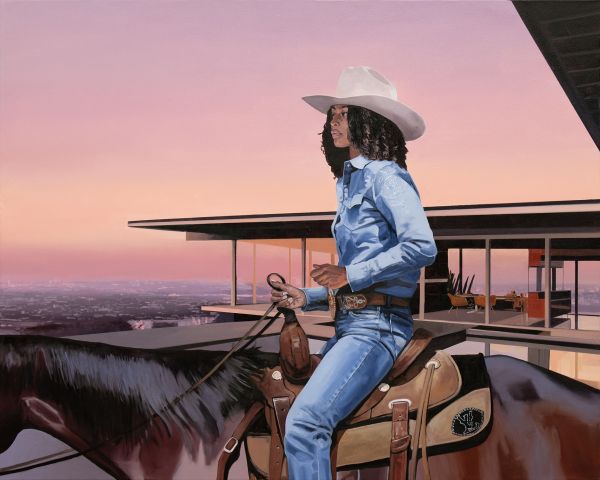
Mid-Century Western
| 12.12.2025 - 01.09.2026 |
Artists: Tracy Stuckey
This new body of work investigates the central Western dichotomy between the civilized interior and the wild exterior, a contrast traditionally used to define the region's cultural identity. These paintings deliberately collapse and reconfigure this boundary, forcing domestic elements outdoors and wilderness symbols inside—as seen when fashion logos are etched into rock or cowboys face off with a television screen—to question the Western's enduring power as both an image and an ideology. Influenced visually by mid-century modern design's attempt to seamlessly merge inside and outside spaces, the figures in the work inhabit a cinematic, nostalgic fantasy shaped by pop culture, yet subtle inclusions of contemporary fashion emblems and synthetic objects reveal that this frontier is merely a carefully staged spectacle, ultimately reflecting on the West's status as a persistent, constructed fantasy.